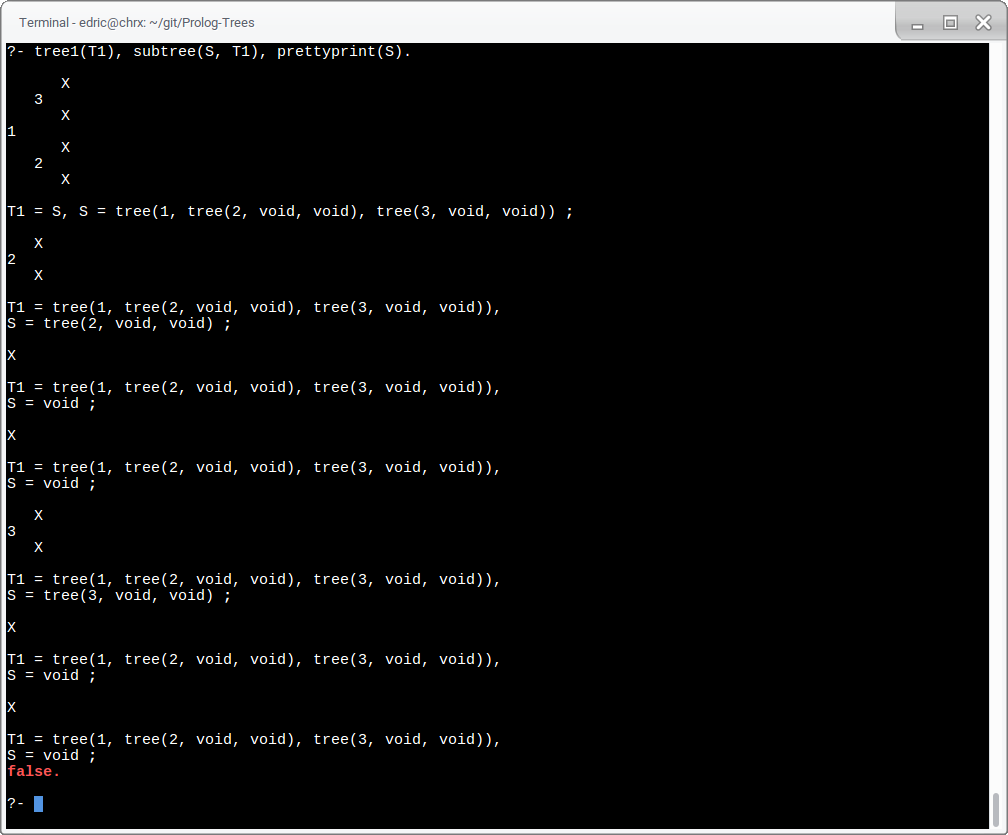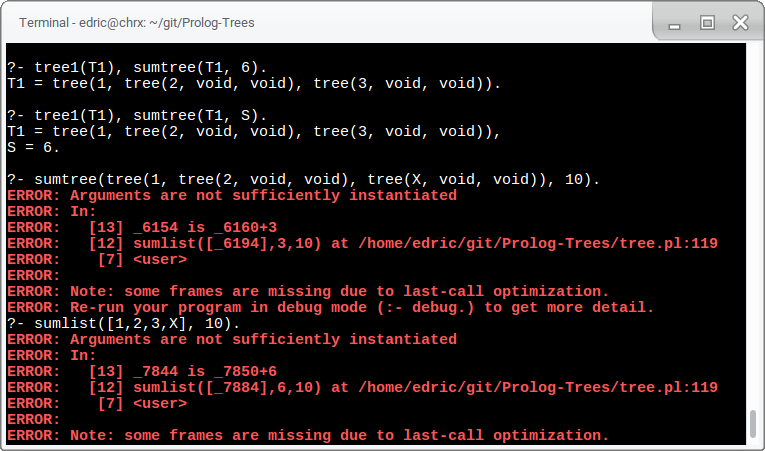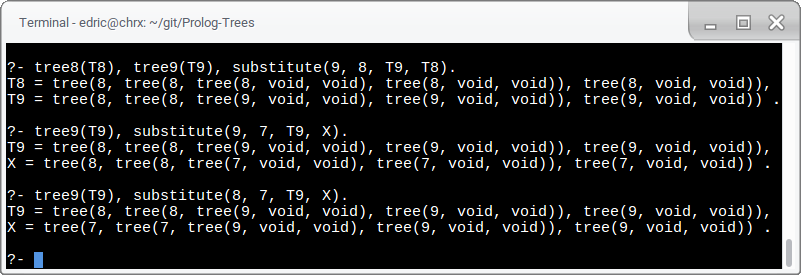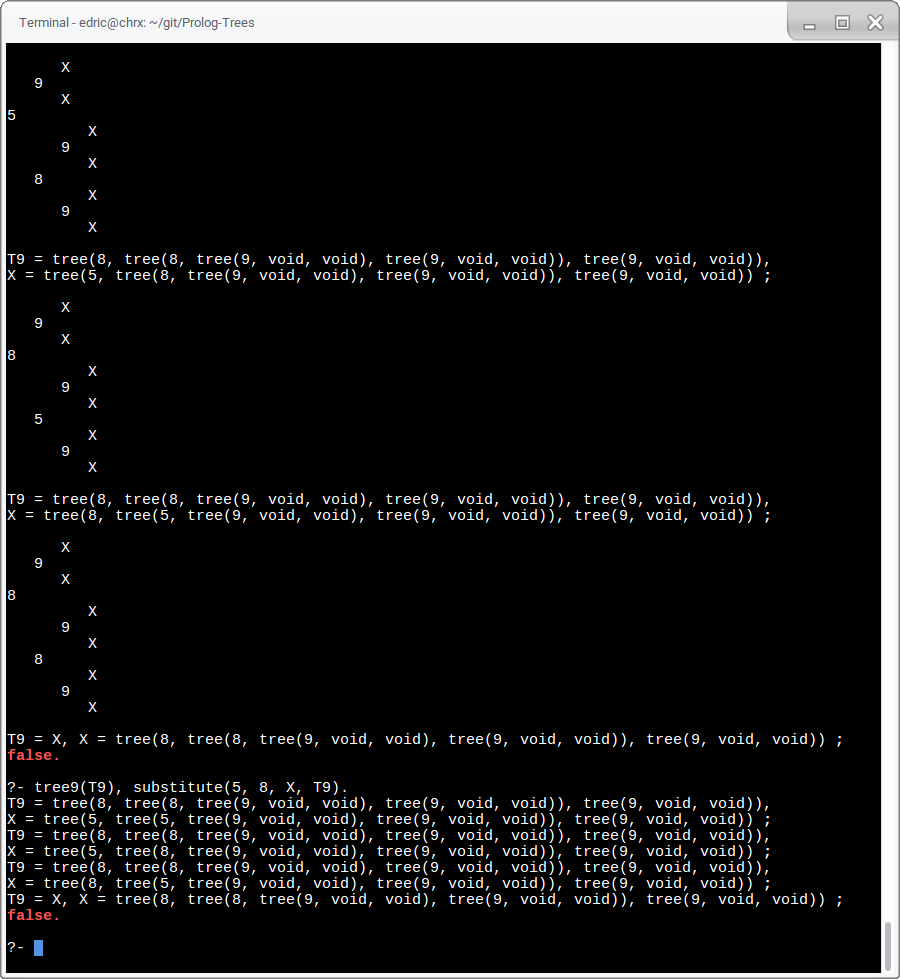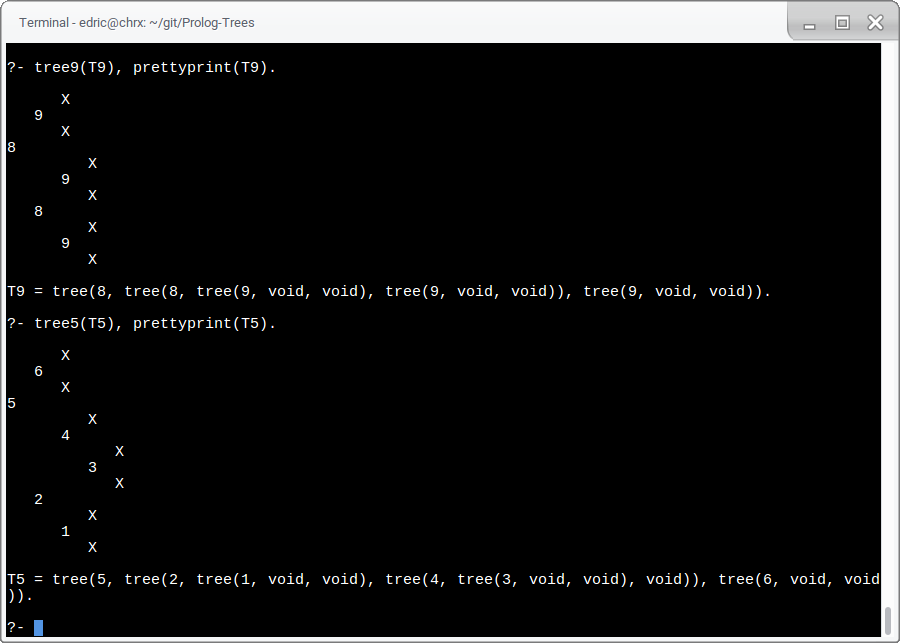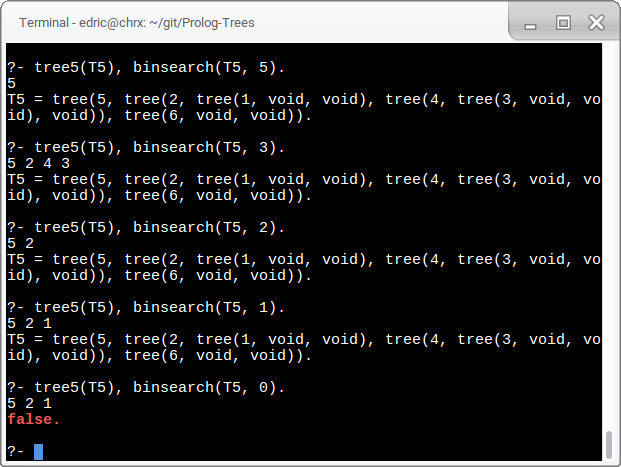A04 - Programming Paradigm: Logic
Your name: Edric Yu
Operating system: GalliumOS
Lab computer or your own computer: my own
Did you receive help from your instructor? No
tree1(tree(1,tree(2,void,void),tree(3,void,void))).
tree2(tree(4,tree(5,void,void),tree(6,void,void))).
tree3(
tree( 1,
tree( 2,
tree(5,void,void),
tree( 6,
tree(7,void,void),
void
)
),
tree(3,void,void)
)
).
tree4(tree(42,void,void)).
tree5(tree(5,tree(2,tree(1,void,void),tree(4,tree(3,void,void),void)),tree(6,void,void))).
tree6(tree(6,tree(2,tree(1,void,void),tree(4,tree(3,void,void),void)),tree(6,void,void))).
tree7(tree(7,tree(2,tree(1,void,void),tree(4,tree(3,void,void),void)),tree(6,void,void))).
tree8(tree(8,tree(8,tree(8,void,void),tree(8,void,void)),tree(8,void,void))).
tree9(tree(8,tree(8,tree(9,void,void),tree(9,void,void)),tree(9,void,void))).
inorder(Tree, List) is true when List is the inorder traversal of Tree.
 The first line is interesting to read. It's saying that the statement is true when T5
is equal to that tree.
This kind of response happens throughout the rest of the demonstrations.
The first line is interesting to read. It's saying that the statement is true when T5
is equal to that tree.
This kind of response happens throughout the rest of the demonstrations.
inorder(Subtree, Tree) is true when Subtree is a subtree of Tree.
This rule can also be used to generate all subtrees of Tree.
sumtree(Tree, Sum) is true when the elements of Tree sum to Sum.
It uses a helper rule sumlist/2 to compute the sum of the list
generated from inorder/2.
ordered(Tree) checks if Tree is ordered like a binary search tree.
search(Tree, Key) finds if Key is in Tree.
It actually invokes the provided tree_member/2.
The trickiest rule to implement.
substitute(X, Y, TreeX, TreeY) checks if
TreeY is the result of replacing all occurrences of X in TreeX with Y.
I noticed that I needed a double implication, which doesn't really exist
in prolog except for rule declarations. So I made substituted/4.
substituted(XValue, YValue, X, Y) makes sure
XValue = YValue
(x)or
XValue = X and YValue = Y.
Remember, T8 is a tree of all 8s, and T9 is like T8 but with 9s at each leaf.
substitute/4 can verify or find trees with substitutions made.
substitute/4 can also find the trees that would
make the substitute result in the desired tree.
It works! It was never explicitly stated that we could use tab/1,
so I made my own tab_over/1.
(refer to T5 prettyprint from above)
Hours to complete assignment: ~4
Understanding prolog is pretty cool!
I'm not sure if I was supposed to just use tree_member to implement search.

